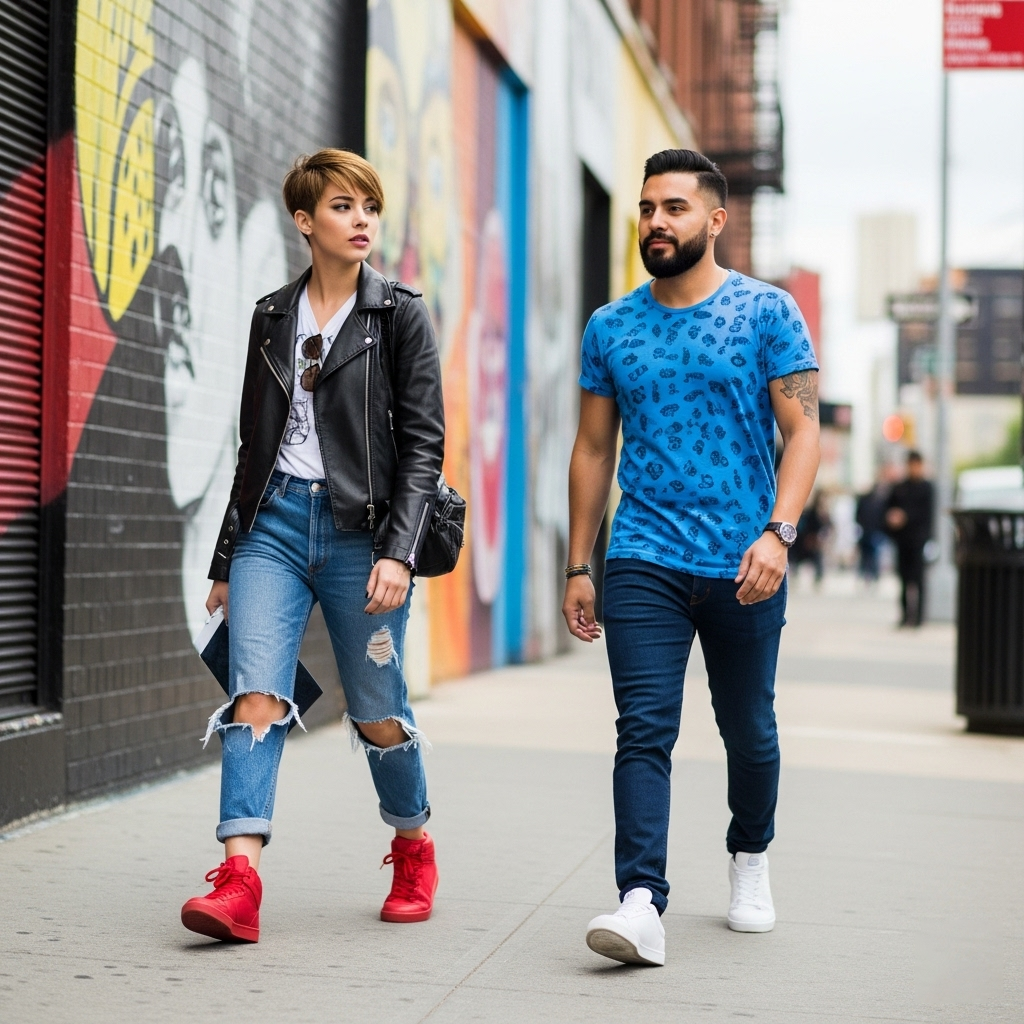For decades, the fashion world was largely dictated from the top down, with haute couture houses and established designers setting the trends that would eventually trickle down to the masses. However, the rise of street style has fundamentally altered this dynamic, transforming the urban landscape into a vibrant and influential runway. Street style, the spontaneous and individualistic expression of fashion worn by everyday people in public spaces, has emerged as a powerful force, reflecting cultural shifts, celebrating personal identity, fostering community, and even influencing the very trends that once originated solely on the catwalk.
The essence of street style lies in its authenticity and its connection to real life. Unlike the often idealized and aspirational imagery of traditional fashion media, street style captures fashion in its rawest and most relatable form. It showcases how individuals interpret and adapt broader trends to their own personal tastes, budgets, and lifestyles. This democratization of fashion has empowered individuals to become active participants in the creation and dissemination of style, rather than passive recipients of top-down directives.
One of the most compelling aspects of street style is its ability to reflect and amplify cultural identities. The clothing choices of individuals often speak volumes about their backgrounds, beliefs, and affiliations. Subcultures, from punk and goth to hip-hop and skate culture, have long used fashion as a visual marker of their shared identity and values. Street style photography captures these nuances, providing a glimpse into the diverse tapestry of urban life and the ways in which clothing can serve as a form of self-expression and belonging. The vibrant colors and bold patterns often seen in the street style of certain cultural communities, for example, can reflect a rich heritage and a proud assertion of identity.
Furthermore, street style fosters a sense of community among fashion enthusiasts. The act of dressing with intention and expressing one’s personal style can be a way of connecting with like-minded individuals. Street style events and online platforms provide spaces for people to share their looks, exchange ideas, and find inspiration. The photographers who document street style often become part of this community, acting as visual chroniclers of these sartorial conversations. This sense of shared passion and creative exchange contributes to the dynamism and evolution of fashion trends.
The impact of street style on mainstream fashion is undeniable. What begins as an organic expression of personal style on the streets of major cities can quickly gain traction through social media and street style blogs, capturing the attention of designers, editors, and retailers. Trends that emerge from the ground up often feel more authentic and resonate more deeply with consumers than those solely dictated by established fashion houses. Designers are increasingly looking to street style for inspiration, observing how real people are styling and combining garments, and incorporating these insights into their own collections. This two-way flow of influence has blurred the lines between high fashion and everyday wear, leading to a more inclusive and diverse fashion landscape.
Social media platforms, particularly Instagram and TikTok, have played a pivotal role in the rise and amplification of street style. These platforms provide a global stage for individuals to showcase their personal style and connect with a vast audience. Hashtags and viral trends can quickly propel street style looks into the mainstream consciousness, bypassing traditional gatekeepers of the fashion industry. Influencers and content creators who specialize in street style have amassed significant followings, further contributing to the democratization of fashion and the power of individual expression.
The ephemeral nature of street style is also part of its allure. Unlike the carefully curated and often timeless aesthetic of high fashion editorials, street style captures a moment in time, reflecting the current cultural zeitgeist, social trends, and individual moods. It is a constantly evolving phenomenon, adapting to new influences and reflecting the ever-changing urban landscape. This dynamism keeps fashion fresh and relevant, constantly pushing boundaries and encouraging experimentation.
However, the rise of street style has also faced its share of criticism. Concerns have been raised about the potential for performativity and the pressure to create “Instagrammable” moments, which can sometimes detract from the authenticity of personal style. The commercialization of street style, with brands increasingly leveraging street style stars and trends for marketing purposes, has also been a subject of debate. It is important to remember that at its core, street style is about genuine self-expression, and while its influence on the broader fashion industry is significant, its true value lies in its ability to reflect the diverse and creative spirit of individuals and communities.
In conclusion, street style is more than just people wearing clothes on the street; it is a powerful cultural mirror that reflects identity, fosters community, and influences trends from the ground up. It represents a democratization of fashion, empowering individuals to express themselves authentically and participate in the ongoing dialogue of style. As long as cities remain vibrant hubs of human interaction and self-expression, street style will continue to evolve and offer a fascinating glimpse into the ever-changing relationship between clothing, culture, and identity. Its impact on the fashion world is a testament to the power of individual creativity and the enduring allure of personal style.


Leave a Comment
Your email address will not be published. Required fields are marked *